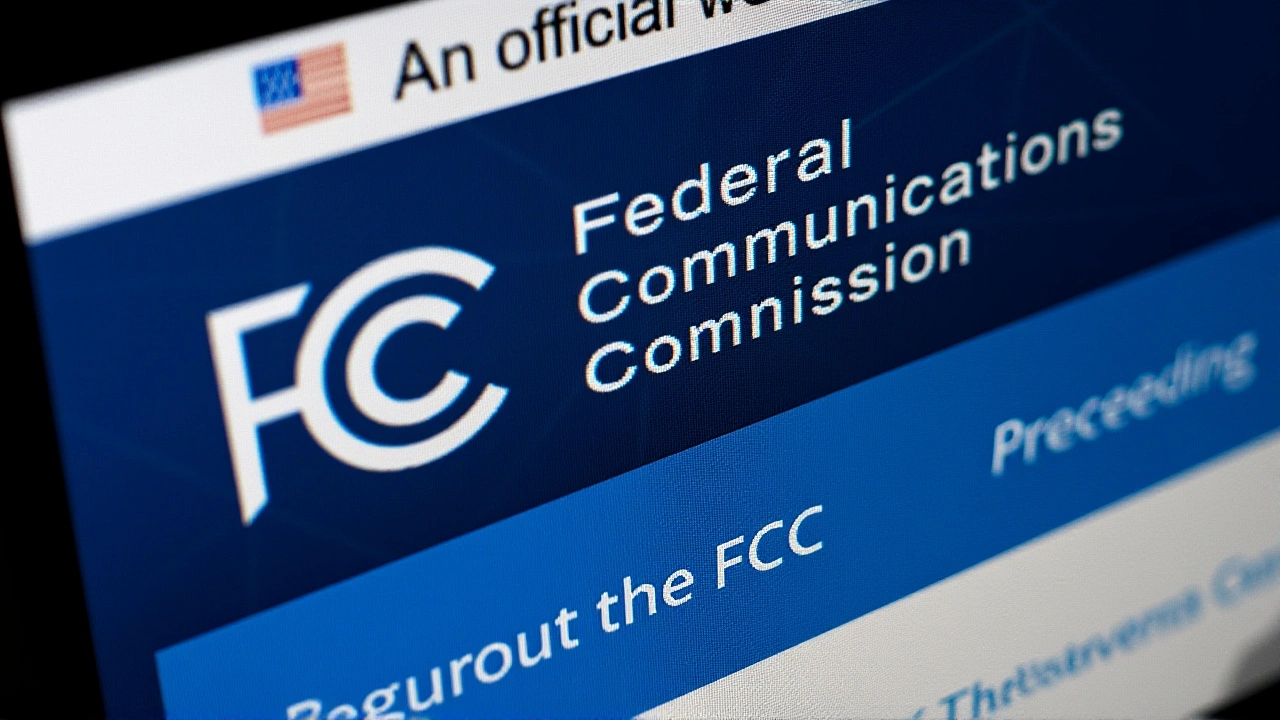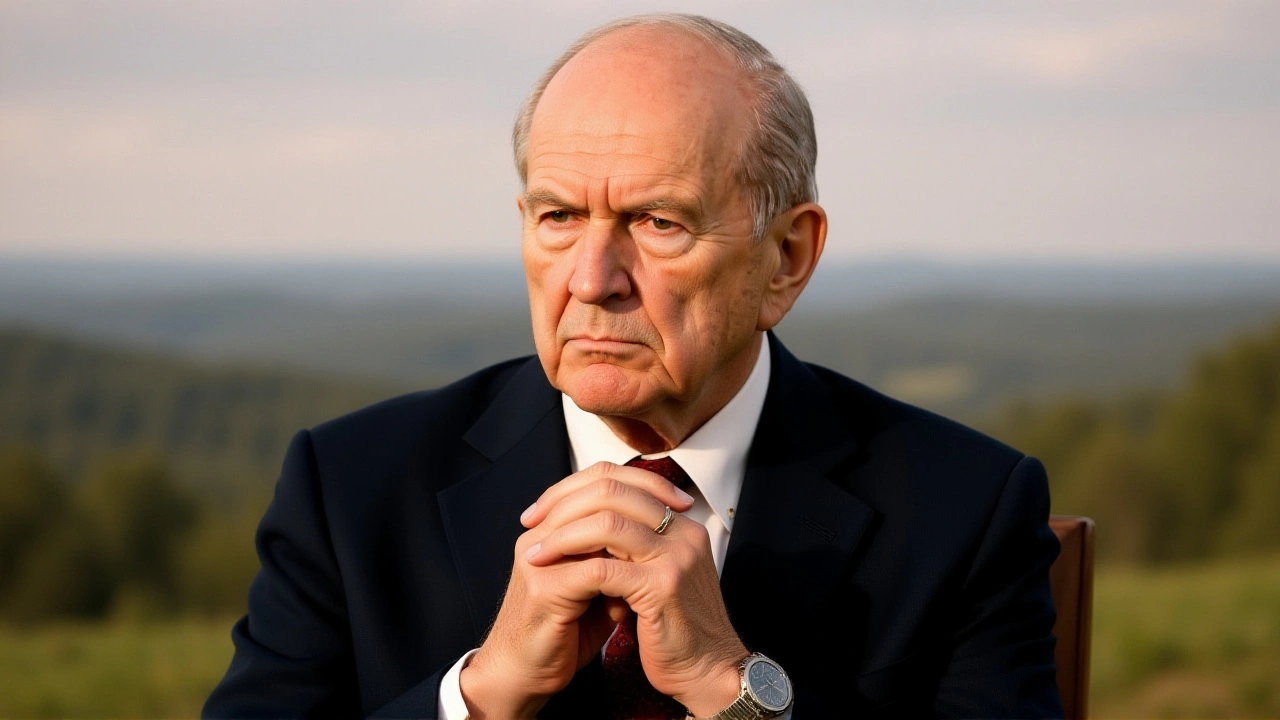When Russell M. Nelson, president of the Church of Jesus Christ of Latter‑day Saints, passed away on September 27, 2025, Utah mourned the loss of a centenarian who’d steered one of the world’s fastest‑growing faiths for seven years, the sadness was palpable across conference rooms and family homes alike.
Nelson died peacefully in his Salt Lake City home shortly after 10 p.m. MDT, surrounded by his wife Wendy Nelson and a flurry of grandchildren and great‑grandchildren. At 101, he was the oldest person ever to hold the top spot in the church’s modern history.
From Operating Rooms to Temple Rooms
Before becoming a spiritual leader, Nelson was a pioneering heart surgeon. In 1955 he performed Utah’s first open‑heart operation, and a few years earlier he’d been part of the University of Minnesota team that built the heart‑lung machine that made the first human bypass surgery possible in 1951.
His medical résumé reads like a Who’s Who of American surgery: president of the Utah State Medical Association, president of the American Board of Thoracic Surgery, and president of the Society for Vascular Surgery. He also taught at the University of Utah School of Medicine, where he helped develop early artificial‑heart technology.
Nelson earned his MD from the University of Utah in 1947 at age 22, then completed a residency and a PhD at the University of Minnesota. He served in the U.S. Army Medical Corps during the Korean War before returning to Utah to build a distinguished clinical career.
Called to Full‑Time Church Service
On April 7, 1984, Nelson was called as an apostle, joining Dallin H. Oaks to fill two vacancies in the Quorum of the Twelve Apostles. He served there for nearly 34 years, becoming quorum president in 2015. When the previous president, Thomas S. Monson, passed away, Nelson was sustained as the seventeenth church president on January 14, 2018.
In LDS doctrine the president is regarded as prophet, seer, and revelator—a claim that gave Nelson a platform to shape doctrine, policy, and the very branding of the faith.
Reforms That Reshaped Worship
One of his first signature moves was to trim the three‑hour Sunday block down to two hours, giving families more “home‑centered” teaching time. He also urged members worldwide to use the church’s full name, insisting that the nickname “Mormon” obscured the centrality of Jesus Christ.
Patrick Mason, a Mormon‑studies professor at Utah State University, said the push for a uniform name was a calculated effort to present a more unified, global face as membership swelled beyond North America.
Nelson’s social‑policy adjustments were notable, if not sweeping. In 2019 he rescinded the 2015 rule that labeled same‑sex couples as “apostates” and barred their children from baptism. He opened the door for children of LGBTQ + parents to be baptized, though the church’s stance against gay marriage remained unchanged.
Temple‑Building Boom and Global Outreach
During his tenure, the church announced roughly 200 new temples, a number that dwarfs the total built in the previous two decades combined. By the time of his death, 32 countries and U.S. territories had felt his personal presence, a testament to his focus on international growth.
Independent analyst Matt Martinich, who tracks LDS conversion data, noted that four of the top five nations seeing growth are in Africa—countries where the church now runs schools, humanitarian projects, and bustling congregations.
The 2024 baptism figures hit a 25‑year high, signaling a resurgence that many scholars attribute to Nelson’s emphasis on personal spirituality combined with aggressive temple construction.

Reactions From Within and Without
Church leaders quickly released a statement celebrating a “century‑rich life of service.” Many local bishops described him as “a living bridge between the past and a hopeful future.”
Outside the faith, political commentators noted the timing—Nelson’s death comes as the U.S. Supreme Court revisits religious‑rights cases, potentially reshaping the legal landscape for faith‑based institutions.
In Salt Lake City, residents gathered outside the headquarters on Main Street, laying flowers and holding a moment of silence. The city’s mayor, Jenny Wilson, said, “Russell Nelson was a son of Utah who gave his talents to both medicine and the spiritual health of millions.”
Legacy and What Comes Next
Nelson’s death triggers the established succession process. The Quorum of the Twelve Apostles will meet to select his successor, a decision expected within weeks.
Regardless of who steps into the role, the policies Nelson set—shorter services, temple expansion, and a clarified name—are likely to endure. The church’s 2025 strategic plan, released just months earlier, already builds on his vision for “global ministry, divine outreach, and community service.”
For the countless grandchildren and great‑grandchildren who remember him as a gentle grandfather who loved music as much as medicine, the loss is personal. As one 12‑year‑old great‑grandchild told reporters, “Grandpa always sang when we visited the hospital—he reminded us that healing can be a song.”
Key Facts
- Death: September 27, 2025, ~10 p.m. MDT, Salt Lake City, UT
- Age: 101 years (born September 9, 1924)
- Church service: President (Jan 2018‑Sept 2025)
- Medical milestones: First Utah open‑heart surgery (1955), heart‑lung machine research (1951)
- Temples announced: ~200 new locations worldwide
Frequently Asked Questions
How does Nelson’s death affect the LDS Church’s leadership?
The Quorum of the Twelve Apostles will convene within weeks to select a new president, following a protocol that dates back to the 19th century. Until then, the First Presidency’s remaining members will oversee day‑to‑day operations.
What were the most controversial reforms Nelson introduced?
His 2019 reversal of the 2015 “apostate” rule for same‑sex couples sparked heated debate. While he opened baptism to children of LGBTQ + parents, he kept the church’s opposition to gay marriage, leaving the issue partly unresolved.
Why did Nelson push for the church’s full name to be used?
He argued that nicknames like “Mormon” diluted the centrality of Jesus Christ. By insisting on the full name, he aimed to align public perception with doctrinal emphasis on the Savior.
What impact did Nelson have on global church growth?
Under his leadership, baptisms in 2024 reached a 25‑year high, driven largely by expansion in African nations. The surge coincided with the announcement of 200 new temples, reinforcing a strategy of localized worship spaces.
What is known about Nelson’s early life before medicine?
As a teenager he sang tenor in a prize‑winning quartet and starred in a university musical, showing an early love for performance that later translated into his charismatic public speaking style.

Rajbir Singh
September 30, 2025 AT 19:16Nelson's career epitomizes the rare blend of science and faith, a dichotomy most leaders fail to reconcile. His pioneering heart surgeries set a benchmark that even secular institutions still cite. Yet the swift shift from operating rooms to temple pulpits raises questions about the true motive behind his reforms.
ONE AGRI
October 5, 2025 AT 06:13While one can admire the sheer magnitude of Nelson's achievements, it is impossible to ignore the implicit narrative that his legacy reinforces a certain American exceptionalism. The story of a Utah-born surgeon turned prophet fits neatly into the grand tapestry of the United States projecting moral authority across continents. Even the ambitious temple-building drive subtly mirrors historic patterns of cultural export that have, for better or worse, shaped global perceptions of the nation. It is as if the church, under his guidance, became an instrument of soft power, extending not merely spiritual guidance but also a distinctly Western worldview. This intertwining of religion with national identity, however well‑intentioned, inevitably stirs a quiet unease among those who value true pluralism.
Kiran Singh
October 9, 2025 AT 17:09What a remarkable life-truly inspiring! 😊
Balaji Srinivasan
October 14, 2025 AT 04:06Absolutely, his dedication to both medicine and faith sets a high bar for anyone aspiring to serve others.
Hariprasath P
October 18, 2025 AT 15:03Nelson’s ascension to the presidency was less a miracle and more a calculated orchestrashun by elite clerical circles, a fact that many faithfull simply choose to overlook.
Vibhor Jain
October 23, 2025 AT 01:59Sure, because every religious institution is just a boardroom wrapped in robes, right?
fatima blakemore
October 27, 2025 AT 11:56Reading about Russell M. Nelson reminds us that a single life can weave together threads of science, faith, and community in ways that few ever achieve. His early work in open‑heart surgery was not just a medical milestone but a profound statement about humanity’s yearning to conquer its own mortality. When he later stepped onto the pulpit, he carried that same daring spirit into the realm of belief, insisting that spiritual health deserves the same rigor as physical health. The decision to shorten Sunday meetings, for example, can be seen as an invitation to families to practice the gospel in their own homes rather than merely attending a program. That shift mirrors a broader philosophical principle: true wisdom is lived, not lectured. His push for the full name of the church echoes the ancient idea that language shapes perception, and by reshaping language we might reshape hearts. Critics point to the lingering stance on same‑sex marriage as a contradiction, and that tension is a reminder that any leader, no matter how revered, remains a product of his cultural moment. Yet the opening of baptismal doors to children of LGBTQ+ parents shows a capacity for compassionate adjustment, a small but meaningful step toward inclusivity. The temple‑building boom, with roughly two hundred new houses of worship, serves as both a logistical response to growth and a symbolic gesture that sacred space can be found across continents. From an anthropological viewpoint, these structures act as anchors, helping new converts root their identity in a tangible tradition. Nelson’s dual identity as surgeon and prophet also invites us to contemplate the relationship between healing the body and healing the soul. In many ways, his life story is a modern parable about the integration of empirical knowledge and transcendent faith. Even his final moments, surrounded by family, underscore a universal truth: no matter how grand our public achievements, personal love endures as the ultimate legacy. As we watch the LDS Church navigate the succession, we might consider how much of his vision will endure and how much will be reshaped by the next hand. Ultimately, Nelson’s century‑long journey reminds us that history is not a series of isolated events but a continuous dialogue between past and future. May his memory inspire us to pursue excellence in whatever calling we answer, be it in a lab, a classroom, or a chapel.
Prakash Dwivedi
October 31, 2025 AT 22:53Nelson's record as a medical innovator is undeniably impressive, yet the rapid institutional changes he instituted often left longtime members feeling unsettled.
Swetha Brungi
November 5, 2025 AT 09:49It’s worth pondering how his scientific mindset may have influenced his systematic approach to church governance, turning spiritual leadership into a kind of organized experiment.
Govind Kumar
November 9, 2025 AT 20:46The passing of President Nelson marks a significant transition for the LDS community. His contributions to both cardiothoracic surgery and ecclesiastical administration have left an indelible imprint. Observers worldwide will watch closely as the Quorum of the Twelve convenes to uphold the continuity of leadership.
Shubham Abhang
November 14, 2025 AT 07:43Indeed, the situation is, without a doubt, unprecedented; the church faces, perhaps, its most critical juncture, yet the protocol remains, as always, meticulously defined!!!
Trupti Jain
November 18, 2025 AT 18:39While the tributes paint a picture of unwavering reverence, one cannot help but notice the occasional gloss over controversies that pepper his tenure.
deepika balodi
November 23, 2025 AT 05:36Indeed, a balanced narrative would acknowledge both the visionary strides and the nuanced challenges he left behind.